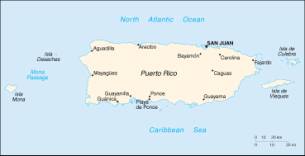LITR 4332: American Minority
Literature

Student Poetry Presentation 2004
“In The Good Ole U.S.A”
Jose A. Villalongo Sr.
(Justo Machiche)
Bio:
Jose Villalongo Sr. was born to Puerto Ricans in New York.
He has gained notoriety through his poetry and photography.
Some of his works can be found in Temas(Themes), Footwork, and The Mill
Street Forward. He continues
through his poetry and presentations to speak on behalf of the “Nuyorican”
people.
Term:
Imagery-à
A term used to refer to the actual language that a writer uses to
convey a visual picture.
Objectives:
1B. Voiceless
and Choiceless---à
discouraged from formal education
4. Minority dilemma of Assimilation or Resistance-à”So
that I could be accepted by White America”
5. Influence of minority writers and speakers
Poem
Interpretation:
This poem is pretty straight forward in its style and language, however
some interesting points I thought were the relationships between his “formal
education” and his “street education” along with his battle to either
assimilate or resist. Villalongo
explains that in his efforts to attend college, he was discouraged and even made
fun of. Instead of learning through
books and teachers, his education came from this discouragement.
I believe that his statements “This was my first lesson in racism
101.” and “This was my second lesson in being educated in White America”
are the two most profound statements of the poem.
Although he comes to realize that he his comfortable with himself as an
Afro-Puerto Rican, it takes the “lessons” of life to make him realize that
being him is ok.
Questions:
(apology for the amount of questions but I was even curious)
1. Can a relationship be drawn between the idea of the
ambivalent minority(Mexican Americans) with the relationships of the immigrant
Puerto Ricans?
2. Do you think that Villalongo experienced a sort of “double
minority” status because he was Afro-Puerto Rican?
3. The word “curse” is used twice in the poem by
Villalongo, do you think there was a purpose to this and if so, what is the
purpose?
4. In the last stanza, Villalongo separates all of the
things that his is proud of giving them each their own line in the poem.
Do you think there was a purpose to this?
 5.
What is your interpretation of the poem?
5.
What is your interpretation of the poem?
